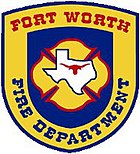
The Los Angeles Fire Department provides firefighting services as well as technical rescue services, hazardous materials services and emergency medical services to the citizens of the city of Los Angeles, California, United States. The LAFD is responsible for approximately four million people who live in the agency's 471 square miles (1,220 km2) jurisdiction. The Los Angeles Fire Department was founded in 1886 and is the third largest municipal fire department in the United States, after the New York City Fire Department and the Chicago Fire Department. The department is sometimes also referred to as the Los Angeles City Fire Department or "LA City Fire" to distinguish it from the Los Angeles County Fire Department, which serves unincorporated areas and, via contracts, other incorporated municipalities within Los Angeles County without their own fire departments. The department is currently under the command of Chief Kristin Crowley.

The New York City Fire Department, officially the Fire Department of the City of New York (FDNY) is the full-service fire department of New York City, serving all five boroughs. The FDNY is responsible for fire suppression and fire prevention, and is a major provider of EMS services in New York City. Beyond fire suppression and EMS, the FDNY is responsible for a broad range of services, including technical rescue, CBRN defense, and structural collapse response and analysis. The FDNY is equipped with a wide variety of general-purpose and specialized Vehicles,Tools and Equipment to serve its varied missions.

Green Village is an unincorporated community and census-designated place (CDP) located within portions of both Harding Township and Chatham Township in Morris County, in the U.S. state of New Jersey. It is located just north of the Great Swamp National Wildlife Refuge. It is named after Ashbel Green, former president of Princeton University.
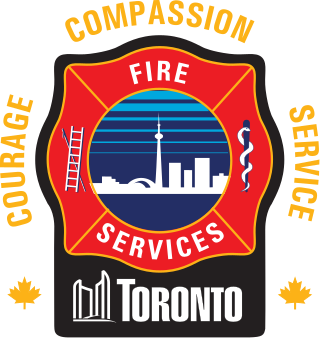
Toronto Fire Services (TFS), commonly called Toronto Fire, provides fire protection, technical rescue services, hazardous materials response, and first responder emergency medical assistance in Toronto, Ontario, Canada. Toronto Fire Services is currently the largest municipal fire department in Canada.

American LaFrance (ALF) was an American vehicle manufacturer which focused primarily on the production of fire engines, ladder trucks, and emergency apparatus such as ambulance and rescue vehicles. Originally located in Elmira, New York, the final iteration of the company was located in Summerville, South Carolina. It also operated a plant in Toronto, Ontario, Canada, where it sold apparatus under the name LaFrance-Foamite, until 1971.
The Orange Fire Department (OFD) provides fire protection and emergency medical services for the city of Orange, California. The department is responsible for a population of approximately 140,000 people spread across 27 square miles (70 km2). Along with their standard firefighting apparatus, the department also has a Swiftwater rescue team that is available for deployment anywhere in Orange County.
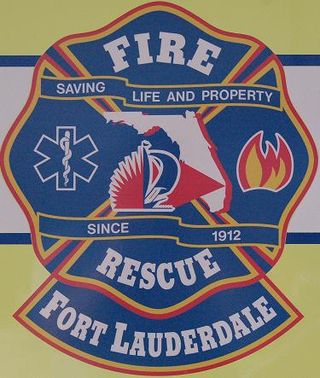
Fort Lauderdale Fire-Rescue Department is the fire and rescue service provider for the City of Fort Lauderdale, Florida, as well as the cities of Wilton Manors and Lazy Lake through service contracts. Additionally the FLFRD is responsible for ARFF at Fort Lauderdale Executive Airport. In 2013, the department responded to 44,387 calls for service.

Established in 1917, the Presidio Fire Department provides primary emergency response to the Presidio of San Francisco.

The Boston Fire Department provides fire services and first responder emergency medical services to the city of Boston, Massachusetts. It also responds to such incidents as motor vehicle accidents, hazardous material spills, utility mishaps, floods, explosions, and construction accidents among others.

The Underwriter's Salvage Corps in Cincinnati, Ohio was created and operated by the Underwriters Association, a syndicate of Cincinnati-based fire insurance companies, for the purpose of reducing financial losses to their companies from claims due to building fires by providing a company of trained men with proper equipment to work in conjunction with the city fire department to protect life, structures and their contents from fire, smoke damage, and damage from the water that was used to fight the fire. The Salvage Corps worked to save and protect the structure and its contents while the city fire department concentrated on rescuing persons from the burning structure and extinguishing the flames. The Salvage Corps provided this service to all property owners without charge, whether they were insured or not.

The Kansas City Fire Department provides fire protection and emergency medical service for Kansas City, Missouri, and under contract to Village of the Oaks, Village of Oakwood Park, and Village of Oakwood. It provides fire protection only under contract to City of Lake Waukomis, City of Platte Woods, City of Weatherby Lake, and Village of Ferrelview. In addition, it provides EMS support under contract for the City of Riverside. It operates 35 fire stations, one dedicated EMS operations facility housing dynamically deployed ambulances, organized into seven battalions and cover 318 square miles (820 km2).

The Engine House No. 11 is a fire station located at 2737 Gratiot Avenue in Detroit, Michigan. It is the oldest remaining firehouse in the city of Detroit; it was designated a Michigan State Historic Site in 1975 and listed on the National Register of Historic Places in 1978.

Firefighting in the United States dates back to the earliest European colonies in the Americas. Early firefighters were simply community members who would respond to neighborhood fires with buckets. The first dedicated volunteer fire brigade was established in 1736 in Philadelphia. These volunteer companies were often paid by insurance companies in return for protecting their clients.
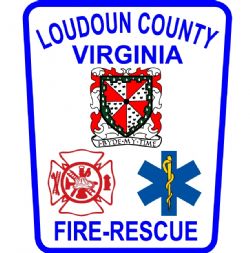
The Loudoun County Combined Fire-Rescue System (LC-CFRS) is made up of the career Loudoun County Fire and Rescue (LCFR) and 16 volunteer organizations. LC-CFRS has the responsibility of protecting the citizens and property of the towns, villages, and suburbs of Loudoun County, Virginia, United States, from fires and fire hazards, providing emergency medical services, and technical rescue response services, including Hazardous Materials mitigation, Mass Casualty Incident response services, environmental danger response services and more. The headquarters and training facilities of the department are in Leesburg, off Sycolin Road.

The Baltimore City Fire Department (BCFD) provides fire protection and emergency medical services to the city of Baltimore, Maryland, United States. Founded in 1797 and established in 1859, the Baltimore City Fire Department covers an area of 81 square miles (210 km2) of land and 11 square miles (28 km2) of water, with a resident population of over 640,000 and a daytime population of over 1,000,000. The BCFD responds to approximately 235,000 emergency calls annually. There are two International Association of Fire Fighters (IAFF) locals; IAFF 734 for firefighters and IAFF 964 for officers.
The Yonkers Fire Department (YFD) provides fire protection and emergency medical services to the city of Yonkers, New York, United States.
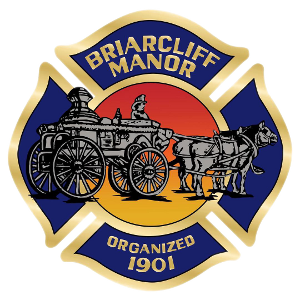
The Briarcliff Manor Fire Department (BMFD) provides fire protection and emergency medical services to the village of Briarcliff Manor, New York and its hamlet Scarborough. The volunteer fire department also serves unincorporated areas of Ossining and Mount Pleasant. The fire department has three fire companies, two stations, and four fire engines. Its engines include three pumpers and a tower-ladder; the department also maintains other vehicles, including a heavy rescue vehicle. The Briarcliff Manor Fire Department Ambulance Corps provides emergency medical transport with two ambulances. The fire department is headquartered at the Briarcliff Manor Village Hall, with its other station in Scarborough, on Scarborough Road.

Portland Fire and Rescue, also known as the Portland Fire Bureau, and sometimes informally the Portland Fire Department, is the principle fire suppression, prevention, and rescue agency of the City of Portland, Oregon, United States. The department is the largest fire protection and emergency medical services provider in the state of Oregon, responsible for an area of 151 square miles (390 km2), with a population of over 632,309. Oversight of Portland's bureaus shifts among the five City Commissioners. As of 2023, Mayor Ted Wheeler has assigned the Fire Bureau to Commissioner Rene Gonzalez.

The Chief Lippert Fire Station, also known as Chemical Engine House No. 1, is a historic fire station built in 1876, two miles north of Milwaukee's central business district. It was listed on the National Register of Historic Places in 1988.

Harrisburg Bureau of Fire (HBF) is a firefighting agency that is located in and serves Harrisburg, Pennsylvania, and its surrounding metropolitan area. It is a career firefighting agency with at least 15 firefighters and fire officers on duty at any given time, supplemented with volunteer staffing as well. Everyday duties for the Bureau include fire suppression, emergency medical services, tactical rescue, urban search and rescue, water rescue, hazardous materials response, fire prevention, fire codes enforcement, and public safety educations.
